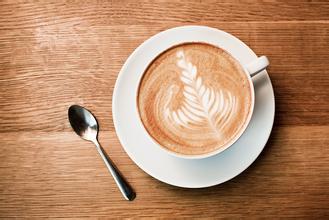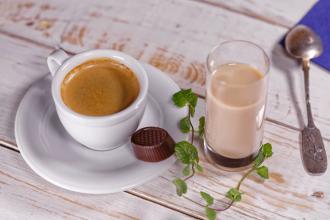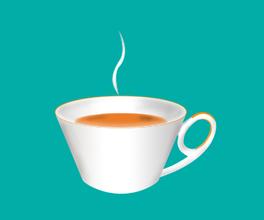Introduction to the long flavor description of Ethiopian coffee in Huigan, the taste characteristics of grinding degree and the variety production area.
However, in recent years, about 10% or 20% of Gima has been used to make up for the lack of taste of coffee, but its quality has gradually declined to its own level, but there are bipolar comments on coffee buyers (my friend only uses Gima as the base of espresso in his store, and its strong flavor surprises me). The coffee is like a hara, which follows the ancient method of sunbathing. It is also a little sour but slightly inferior to Hara, with a medium texture, rugged and earthy taste growing in the highlands of Western Ethiopia at an altitude of 4900-5900 feet (Wollega province), north of Jima, mostly wild, with an annual output of about 500000bags/60kg, mostly exported to G5/G4, with beans bigger and longer than Longberry, brownish in green, similar to jasmine tea, bitter, lack of rising Hara, and slightly sour. Slightly fruity and wine aroma is slightly inferior to Hara, but has a good texture viscosity, so the beans in Jinbi area are jokingly called "poorman'". SHarar ".
The taste is complex but balanced, with better throat rhyme in deep culture and longer back sweet, which is one of the materials that many bakers like to use as comprehensive beans, of course, it can also be used as a good single product, suitable for drinking after meals.
Hara is located in the Eastern Highlands of Ethiopia (Harerge Province) and grows between 5000 and 7000 feet above sea level. A century ago, it was still wild on the slopes. Most of the raw beans are medium size and long at both ends, with yellow or golden green color, strong chocolate smell when baking, wild taste with moderate acidity and rich texture. It is a very typical mocha flavor. Good Hara has jasmine scent. And similar to the aftertaste of fermented wine, to some extent, the Mattari close to the BaniMatar area of Yemen is better.
Today, Hara still treats raw beans in the traditional sun treatment, which is usually exported to the neighboring town of DireDawa, with an annual output of about 185000bags/60Kg, of which long beans (Longberry, evolved from the early cultivation of Elaraby trees,) and most of the specifications are G5 (Grade5) or G4. Unfortunately, good halas are often smuggled to Yemen to sell mocha beans at higher prices. Ethiopia is called "the birthplace of coffee". There is such a local custom that no matter how poor people are, they must have a coffee pot and a charcoal stove. Why? Because the local people think that coffee is what they have to make every day, because they think chemical fertilizer is very expensive, so they never use chemical fertilizer. Then, after this coffee is cooked, it is divided into three courses. The first course of coffee is for the male elder to drink, because after the first course of coffee is brewed, it is relatively strong, and then it should be given to the male elder mainly with respect. The second way is for women, and for women who come to be guests, give them a drink. Then the third course is the lightest one, which is for the guest children to drink. Therefore, it is divided into such three processes, and its coffee is also very characteristic locally.

Important Notice :
前街咖啡 FrontStreet Coffee has moved to new addredd:
FrontStreet Coffee Address: 315,Donghua East Road,GuangZhou
Tel:020 38364473
- Prev

Fragrant and smooth Jamaican coffee grindness taste characteristics introduction to the flavor description of fine coffee beans
People who love Blue Mountain Coffee say: it is a coffee beauty that combines all the advantages of good coffee. Jim, general manager of Pitt, which is famous for its coffee and tea business in the United States, said of Blue Mountain Coffee: it tastes fragrant, smooth and mellow, and it makes me feel as precious as a gem. It is precisely because the taste of Blue Mountain Coffee is moderate and perfect, so Blue Mountain Coffee is usually black.
- Next

Flavor description of Panamanian Rosa Coffee with nutty aroma the characteristics of high-quality coffee beans
The fragrance of flowers, tropical fruits, strong sweetness; these are the feelings that Rose Summer has always given us. Properly baked, they make you feel like sipping the fragrance of a bouquet of flowers. Maybe you don't know the story of Rosa, an ancient native species from Ethiopia that was brought into a coffee experimental garden in Costa Rica as a coffee sample.
Related
- Detailed explanation of Jadeite planting Land in Panamanian Jadeite Manor introduction to the grading system of Jadeite competitive bidding, Red bid, Green bid and Rose Summer
- Story of Coffee planting in Brenka region of Costa Rica Stonehenge Manor anaerobic heavy honey treatment of flavor mouth
- What's on the barrel of Blue Mountain Coffee beans?
- Can American coffee also pull flowers? How to use hot American style to pull out a good-looking pattern?
- Can you make a cold extract with coffee beans? What is the right proportion for cold-extracted coffee formula?
- Indonesian PWN Gold Mandrine Coffee Origin Features Flavor How to Chong? Mandolin coffee is American.
- A brief introduction to the flavor characteristics of Brazilian yellow bourbon coffee beans
- What is the effect of different water quality on the flavor of cold-extracted coffee? What kind of water is best for brewing coffee?
- Why do you think of Rose Summer whenever you mention Panamanian coffee?
- Introduction to the characteristics of authentic blue mountain coffee bean producing areas? What is the CIB Coffee Authority in Jamaica?

